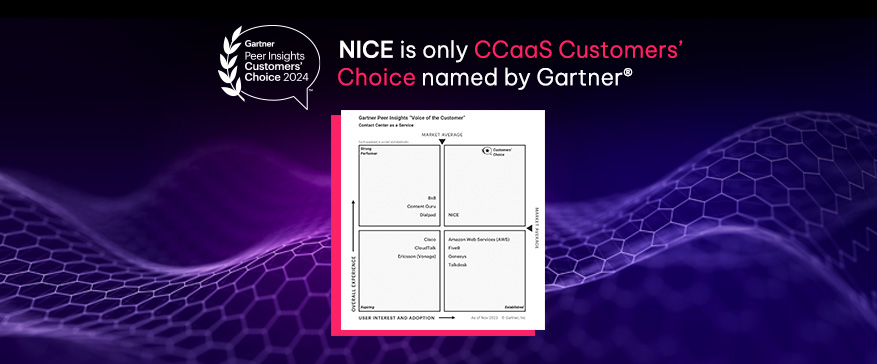Types of Customer Data Analysis
Customer data analysis is categorized into three major types: Descriptive, Predictive, and Prescriptive. Each type serves a unique purpose and provides different insights that help businesses enhance their strategies and achieve their objectives.
Let’s delve deeper into each type to understand how they contribute to customer analytics.
Descriptive Analytics
Descriptive analytics involves analyzing past customer actions to understand what happened. It helps recognize trends in past customer behavior, such as identifying patterns in customer loyalty and purchasing behavior. Data types that inform descriptive analytics include customer support ticket trends, website bounce rates, and product feature usage.
Behavioral analysis can identify patterns in customer loyalty and purchasing behavior, while demographic analysis focuses on characteristics such as age, gender, income, and location. For example, demographic analysis can be utilized in marketing to identify customer segments, target markets, and tailor campaigns. One example of descriptive analytics output is identifying low ratings in customer satisfaction surveys, which can prompt immediate action to improve services.
Overall, descriptive analytics provides a foundation for understanding customer behavior, helping businesses make data-driven decisions to enhance customer engagement and satisfaction. By continuously analyzing past data, companies can stay informed about their customers’ needs and preferences, allowing for more effective marketing and service strategies.
Predictive Analytics
Predictive analytics uses historical data to forecast future customer behavior. By analyzing past customer behavior, predictive analytics can forecast potential future sales trends and customer interests, allowing businesses to anticipate customer needs and tailor their offerings accordingly. This type of analytics enhances customer engagement. It does so by predicting behavior and preferences using past data.
For instance, predictive analytics can help businesses identify customers who are likely to churn and take proactive measures to retain them. By leveraging machine learning algorithms and statistical models, companies can gain valuable insights into future customer behavior, enabling them to make more informed business decisions and optimize their marketing strategies.
Prescriptive Analytics
Prescriptive analytics goes beyond predictions to provide actionable recommendations based on analyzed data. It suggests actions to achieve certain outcomes, helping businesses optimize customer interactions and marketing strategies. For example, prescriptive analytics can recommend specific actions to improve customer satisfaction and retention.
Integrating prescriptive analytics into operations enables data-driven decisions that enhance customer experiences and drive growth. This type of analytics provides a roadmap for achieving business objectives, ensuring that every action taken is backed by data and aimed at maximizing customer engagement and satisfaction.
Best Practices for Implementing Customer Analytics
Implementing customer analytics effectively requires following best practices that ensure accurate data collection, analysis, and application. Establishing clear and specific objectives is essential to guide the analysis process effectively. Collecting relevant data that aligns with business objectives ensures that insights derived are actionable and beneficial. Ensuring data quality involves systematically cleaning and categorizing data to maintain its accuracy and usability for analysis.
Let’s explore these best practices in more detail.
Setting Clear Goals
Establishing clear goals before data collection ensures that efforts are focused and aligned with business objectives. Having specific objectives helps guide data collection efforts, making them more targeted and productive. For example, defining measurable objectives aids in evaluating the effectiveness of customer data collection efforts.
Limiting data collection to what is necessary helps streamline the analysis process and avoid distractions. By setting clear and specific goals, businesses can ensure that their customer analytics initiatives are aligned with their overall strategy, leading to more effective and impactful results.
Collecting Relevant Data
The initial step in the data collection process for customer analytics is to make a list of necessary data points. This can include names, addresses, previous support tickets, purchase history, and more. Data sources for customer analytics range from first-party data, surveys, feedback forms, to digital analytics metrics. Collecting this data enables businesses to gain a deeper understanding of their customers. It also allows them to enhance their products and services while tailoring their marketing strategies.
Methods for gathering information for diagnostic analytics include open-ended survey questions, reviews, and social media comments. Standardizing data formats contributes to consistency and accuracy, making it easier to analyze. Regularly reviewing and cleaning customer data helps eliminate errors and redundancies, ensuring the data remains reliable and useful for analysis.
Focusing on relevant data collection streamlines analytics processes and helps derive meaningful insights. This targeted approach to data collection ensures that companies gather only the most pertinent information, avoiding data overload and enhancing the overall efficiency of their analytics efforts.
Ensuring Data Quality
Cleaning and categorizing customer data is essential. It ensures that the information remains accurate, up-to-date, and useful. Ensuring data quality involves systematically cleaning and categorizing data to maintain its accuracy and usability for analysis. Consolidating data into a customer database not only improves data quality but also helps comply with data privacy laws and secure customer data.
A data product approach can help organizations quickly achieve a comprehensive view of customer data by managing it in a business-focused manner. By maintaining high data quality, businesses can ensure that their analytics efforts yield accurate and actionable insights, ultimately leading to more effective decision-making and improved customer experiences.
To effectively analyze customer data, businesses need robust tools and software. These tools help collect, process, and interpret customer data, providing valuable insights into customer behavior and preferences.
Let’s explore some of the top customer analytics tools available today, including NiCE, Google Analytics, and Amplitude.
NICE
NiCE is recognized as a leading customer analytics tool that provides comprehensive insights for businesses. Key features of NiCE include advanced data collection, analysis techniques, and reporting capabilities that allow for real-time updates and insights. These features enable businesses to gain a complete picture of their customer interactions and preferences.
The benefits of using NiCE encompass improved customer understanding, enhanced decision-making, and increased ability to tailor services to meet customer needs. By integrating NiCE into their analytics processes, businesses can leverage its powerful tools to boost customer satisfaction and retention, ultimately driving growth and success.
Google Analytics
Google Analytics is a widely-used, free analytics tool that provides insights on user interactions with websites. The premium version, Google Analytics 360, costs $12,500 per month and offers advanced features suited for larger enterprises. Google Analytics helps businesses understand user behavior patterns, track complex metrics such as user paths and conversion funnels, and enhance their marketing strategies and website effectiveness.
By collecting data on user interactions, businesses can gain valuable insights into customer preferences and behaviors, allowing them to tailor their offerings and marketing campaigns accordingly. This powerful tool is indispensable for businesses looking to optimize their online presence and improve customer engagement.
Amplitude
Amplitude focuses on analyzing user interactions and offers advanced features like cohort analysis to understand user retention. It effectively analyzes user behavior across various devices, allowing businesses to track interaction patterns and gain valuable insights into user behavior.
Cohort analysis in Amplitude assists businesses in understanding user retention by grouping users based on common behaviors. Utilizing Amplitude provides valuable insights into user behavior, which can enhance marketing strategies and improve customer experiences.
Leveraging these insights allows businesses to create personalized and effective marketing campaigns, driving customer engagement and loyalty.
Applications of Customer Analytics
Customer analytics has a wide range of applications, from customer segmentation to predicting churn and enhancing customer experience. By analyzing customer data from multiple channels, businesses can gain insights into customer behavior and preferences, leading to more informed business decisions and improved performance.
Let’s explore some of the key applications of customer analytics in more detail.
Customer Segmentation
Customer segmentation involves analyzing patterns and trends in customer behavior to categorize customers into distinct groups. Different customer segments prefer different communication channels; for instance, older age groups prefer email while younger demographics favor TikTok. Personalization can be implemented using customer segmentation to identify customer engagement and tailor personalized emails to each group.
Customer segmentation enhances subscriber engagement by recommending content tailored to the preferences of each segment. Industries such as retail, streaming services, and e-commerce use customer analytics to personalize experiences and optimize operations.
In the retail sector, customer analytics assists in optimizing product placements and tailoring marketing campaigns to align with customer buying habits.
Predicting Customer Churn
Predictive analytics allows businesses to anticipate customer needs and identify patterns that could lead to churn. By implementing customer analytics, businesses can identify customer behavior patterns and reduce churn risks, focusing on at-risk customers and proactively addressing their issues. For example, offering incentives such as a free month of service can help retain customers identified as at-risk.
Utilizing predictive customer journey analytics can enhance marketing strategies and ultimately improve customer retention. Understanding and predicting customer behavior enables proactive measures to retain customers and reduce churn, boosting satisfaction and loyalty.
Enhancing Customer Experience
Effective customer analytics enables businesses to create personalized experiences and improve customer engagement. By providing insights into customer behavior, preferences, and needs, customer analytics helps businesses tailor their offerings and marketing strategies to meet specific customer requirements. Descriptive analytics can utilize metrics from customer satisfaction feedback to provide insights into overall customer happiness.
Customer engagement analytics track interactions across various channels to improve overall customer experience. Industries such as healthcare, travel, and hospitality use customer analytics to enhance patient outcomes, tailor offerings, and optimize pricing strategies for better revenue.
NICE’s predictive analytics tools enable organizations to anticipate customer dissatisfaction and improve service strategies to enhance satisfaction. Regularly tracking customer behavior data can reveal patterns that inform strategies for optimizing customer experience.
Overcoming Challenges in Customer Analytics
Utilizing secure storage practices is essential to protect customer information and comply with data privacy laws. Integrating customer data that includes personally identifiable information requires adherence to security regulations and compliance measures. Challenges in protecting data and compliance with privacy regulations can lead to significant penalties for violations.
Different formats used across business units for data storage hinder effective processing and integration of customer data. As enterprises generate increasing amounts of data, scalability becomes a challenge for traditional customer data integration tools. A significant challenge in customer data integration is the presence of disparate data sources, which complicates the creation of a unified customer view.
Current CRM, MDM, and CDP tools often fail to deliver a complete customer view as they may not integrate all relevant data sources. Poor quality of data can arise from manual entry processes and lack of governance, leading to inconsistencies and unreliability in customer analytics.
Data privacy laws and the risk of managing large amounts of data can complicate the quality and accuracy of analytics. Companies should regularly review their data storage practices to ensure effectiveness against threats and regulations. Addressing these challenges ensures the integrity and reliability of customer analytics efforts.
Real-World Examples of Customer Analytics
Customer analytics software plays a crucial role in enhancing business strategies and customer satisfaction by providing actionable insights to understand customer behavior and customer analytics work.
Let’s explore some real-world examples to illustrate the transformative power of customer analytics across various sectors.
Case Study: NiCE
NiCE facilitated the integration of customer analytics to identify key retention metrics and trends. Through targeted outreach and personalized content, NiCE’s strategies significantly reduced churn rates among key customer segments. NiCE’s analytics tools enabled real-time tracking of customer feedback, leading to immediate improvements in services that bolstered satisfaction.
The overall integration of NiCE’s solutions transformed the company’s approach to customer relations, markedly enhancing retention and satisfaction metrics. This case study demonstrates how effective customer analytics can drive significant improvements in customer engagement and loyalty.
Industry-Specific Applications
Customer analytics is widely applicable across various sectors, enhancing performance and customer experience. Healthcare providers utilize customer analytics to improve patient care management and treatment strategies based on patient data. Financial services utilize customer analytics to assess risk factors in loans, enabling quicker and more accurate decision-making. In banking, customer analytics aids in personalizing services and detecting fraudulent activities through behavioral insights.
Telecommunications companies leverage customer analytics to determine the effectiveness of marketing campaigns and optimize targeting. Customer analytics enhances user engagement by personalizing content based on behavior.
Consumer packaged goods companies use customer analytics to refine product offerings and improve inventory management. These examples highlight the versatility of customer analytics in driving growth and enhancing customer relationships across different industries.
Summary
In conclusion, customer analytics is an indispensable tool for businesses looking to thrive in 2024 and beyond. By understanding and leveraging customer data, companies can make informed decisions that enhance customer satisfaction, drive business growth, and improve overall performance. From setting clear goals and collecting relevant data to ensuring data quality and utilizing advanced analytics tools, businesses can harness the power of customer analytics to stay ahead in a competitive market.
As we’ve seen through real-world examples and industry-specific applications, the impact of customer analytics is profound and far-reaching. By overcoming challenges and implementing best practices, businesses can unlock the full potential of customer analytics, transforming raw data into valuable insights that drive success. Embrace customer analytics today and pave the way for a brighter, data-driven future.








